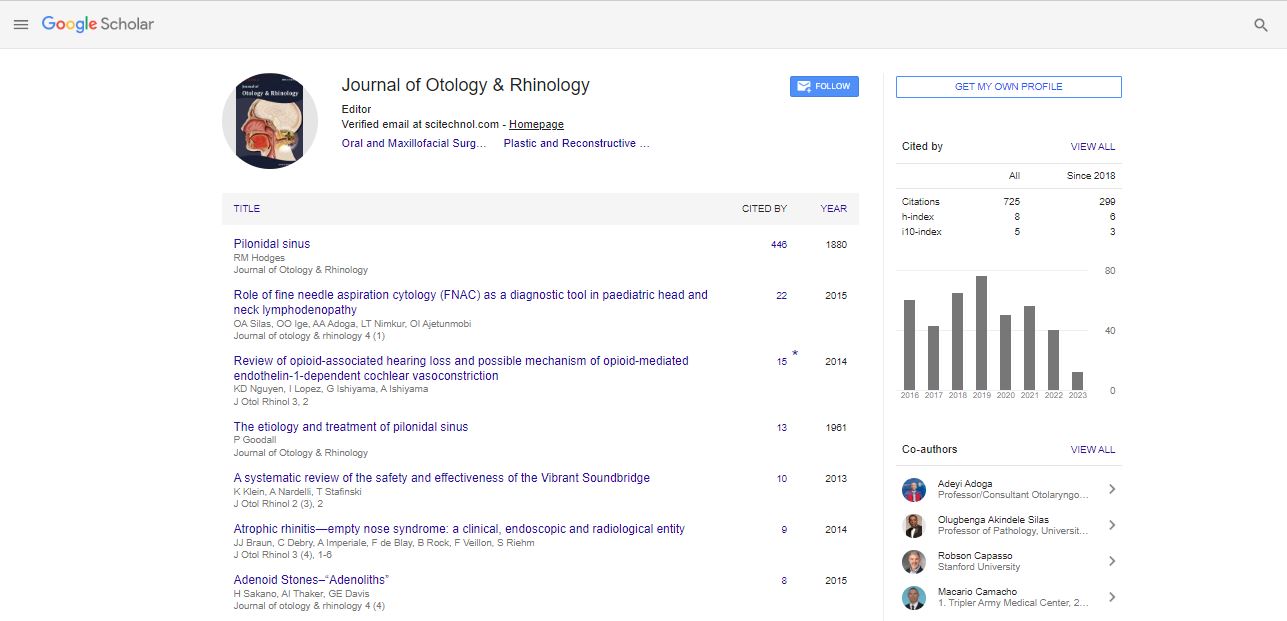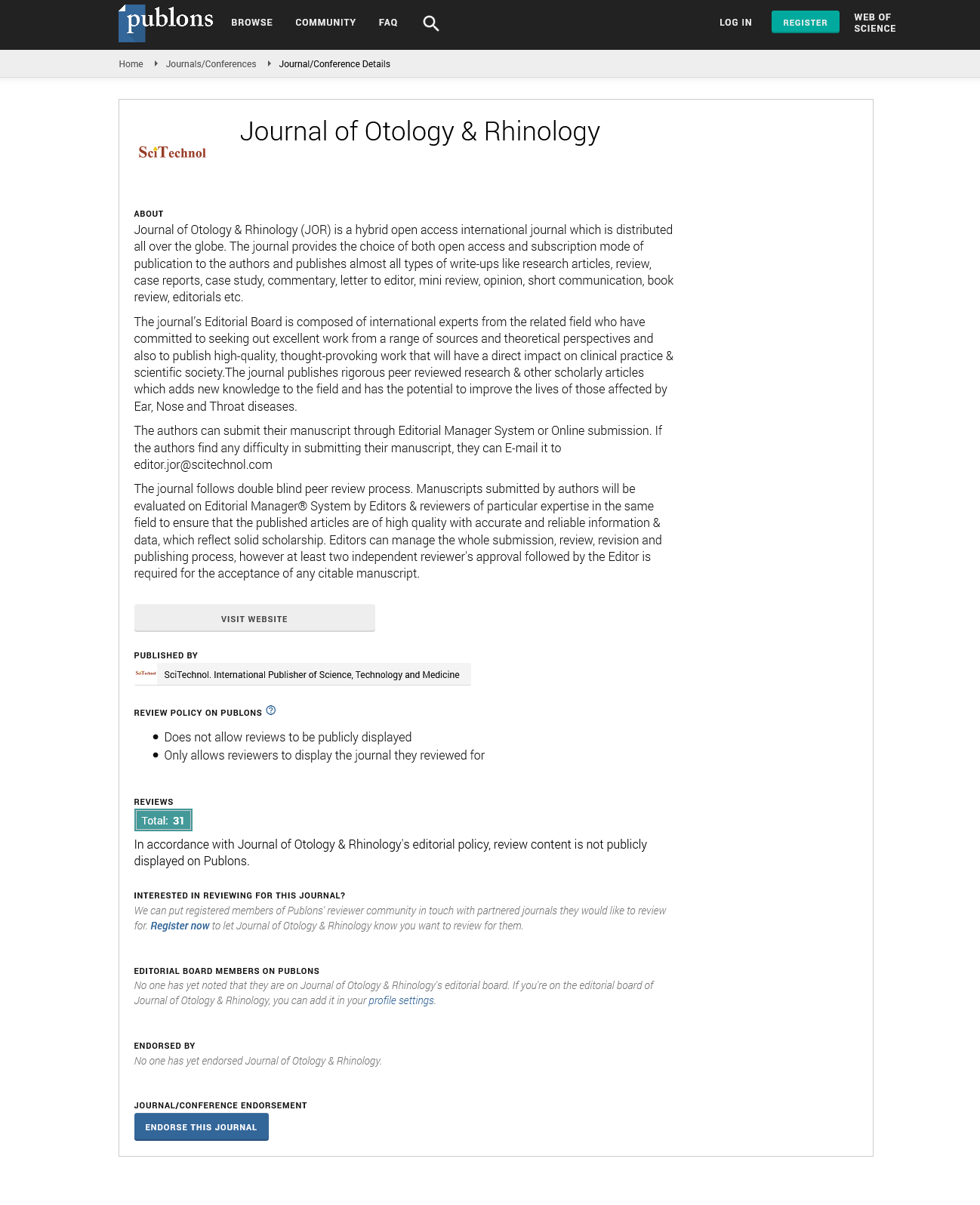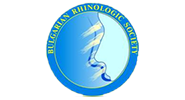Transoral angiolytic laser surgery for early glottic carcinoma
James Burns
Harvard University, USA
: J Otol Rhinol
Abstract
The purpose of this presentation is to report voice and oncologic results from a cohort of patients with early glottic cancer who were treated with ultra-narrow margins using angiolytic KTP laser surgery. Wound healing after transoral angiolytic laser surgery for early glottic carcinoma was analyzed to identify factors influencing healing and clinical significance of persistent granulation tissue. A cohort of 117 patients (T1a-71, T1b-11, T2a-10, T2b-25) underwent KTP laser treatment of early glottic cancer with a minimum 4-year follow up. Pre-treatment and post-treatment voice outcome data were obtained in 72/117 patients. Evaluations included objective measures (acoustic and aerodynamic) and Voice-Related Quality of Life survey (VRQOL). Disease control for T1 and T2 lesions was 96% (79/82) and 80% (28/35) respectively. All 10 recurrences were treated with radiotherapy. Larynx preservation and survival were achieved in 99% (81/82) with T1 disease and 89% (31/35) with T2 disease. There were statistically significant post-operative improvements for acoustic measures of voice quality (perturbation and signal-to-noise) and self-assessments of vocal function for both groups. Angiolytic KTP laser treatment of early glottic cancer is an effective treatment for early glottic cancer. Oncologic results compare favorably with other reported series and voice results show excellent preservation of glottic function. Most vocal fold wounds heal completely within 3 months after angiolytic laser surgery for early glottic carcinoma. Larger and deeper wounds are more likely to heal with granulation tissue. Granulation can resolve without surgical intervention; however, granulation present >3 months warrants biopsy due to increased risk of malignancy. Recent Publications 1. Friedman AD, Hillman RE, Landau-Zemer T, Burns JA, Zeitels SM. Voice Outcomes for Photoangiolytic KTP Laser Treatment ofEarly Glottic Cancer. Ann Otol Rhinol Laryngology2013; 122: 151-158. 2. Burns JA. (2014). American Academy of Otolaryngology-Head andNeck Surgery Foundation, Home Study Course, Section 6 - Laryngology, VoiceDisorders and Bronchoesophagology, Section Editor 3. Ainsworth TA, Kobler JB, Loan GJ, Burns JA. Simulation Model for Transcervical Laryngeal InjectionProviding Real-time Feedback. Ann OtolRhinol Laryngol 2014; (e-pub). 4. Friedman AD, Hillman RE, Landau-Zemer T, Burns JA, Zeitels SM. Voice Outcomes for Photoangiolytic KTP Laser Treatment ofEarly Glottic Cancer. Ann Otol Rhinol Laryngology2013; 122: 151-158.
Biography
James Burns is a Laryngeal Surgeon at Massachuestts General Hospital’s Voice Center. He specializes in treatment of laryngeal diseases in patients with voice and swallowing disorders. He completed residency in Otolaryngology-Head and Neck Surgery in 1996 at the University of Virginia Health Sciences Center in Charlottesville, Virginia. He teaches at Harvard Medical School and Co-directs the laryngeal surgery fellowship program at MGH. His research interests include laser laryngeal surgery, vocal fold paralysis, and high-speed vocal fold imaging, and has over 60 publications in national peer-reviewed journals.
E-mail: burns.james@mgh.harvard.edu
 Spanish
Spanish  Chinese
Chinese  Russian
Russian  German
German  French
French  Japanese
Japanese  Portuguese
Portuguese  Hindi
Hindi 


